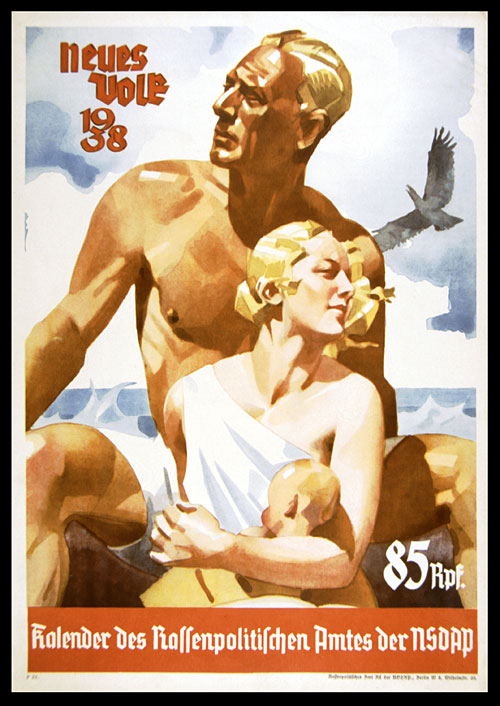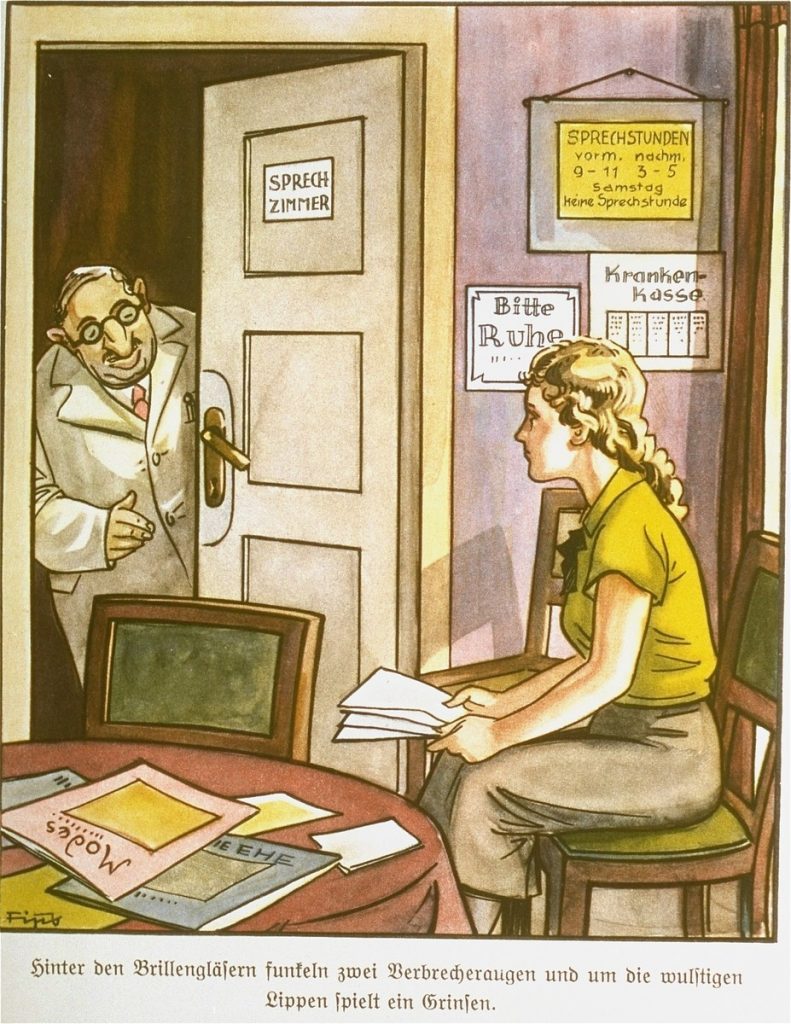Module 2: Gender and Sexuality
Sex and Sexuality: Nazi Ideology

One of the fascinating dynamics of sex and sexuality is how, as cultural theorist Michel Foucault argues, when we study sex and sexuality historically, we find that, as in all expressions of power relations, power operates in multiple direction—thus the liberalization and promotion of sex at the same time there is intense sexual repression. As historian Dagmar Herzog so ably demonstrates, this is absolutely at play in the context of Nazi Germany.
The issue, as she points out, is that “all the ugly aspects of Nazi sexual politics and other politics were not embedded in a broader anti-sexual attitude, as so many scholars have surmised, but rather coexisted with (however conventional and conformity-inducing) injunctions and encouragements to the majority of Germans to seek and experience sexual pleasure.”
Dagmar Herzog, “Hubris and Hypocrisy, Incitement and Disavowal: Sexuality and German Fascism,” Journal of the History of Sexuality 11, no. 1/2 (2002): 13.
Sexuality and German Fascism

Page from the antisemitic German children’s book, Der Giftpilz (The Poisonous Mushroom). The text reads, “Two criminal’s eyes glow behind the glasses, a grin is playing on the fleshy lips.” Nuremberg, Germany, 1935. #40009, United States Holocaust Memorial Museum.
Lecture by Dr. Deidre Butler
This mini-lecture aims to give you tools for thinking about sex and sexuality during the Holocaust by examining the ways in which the Nazis and their supporters used sex, sexuality, and gender to persuade and persecute. How did Nazi laws, policies, and propaganda use sex and of course gender to strategically dehumanize, other, and target Jews across social, cultural, political, and legal contexts?
Racial Ideology and Gender in Law
Oral History: Fritz Gluckstein
In this oral history interview, Fritz Gluckstein reflects on the Nuremberg Race Laws. He illustrates how complicated it is to think about Jewish identity and the Holocaust. Under the Nuremberg laws, Fritz Gluckstein was a Geltungsjude, the child of intermarriage between an Aryan and a Jew. According to Jewish law, he was not Jewish because his mother was not Jewish. Unlike many mischlinge who may not even have known they had a Jewish heritage, he was raised as a Jew and identified as such.
Guest Lecture by Anna Hájková
In this guest lecture, Dr. Anna Hájková presents a primer on sexuality and the Holocaust and focuses particularly on stigmatized histories. This will be helpful in thinking about questions of sexual violence, as well as the persecution of LGBTQ+ individuals.
Guest Lecture by Dr. Geoffrey Giles
In this first guest lecture, Dr. Geoffrey Giles outlines the evolution of scholarship on homosexuality and the Holocaust. As you listen to Dr. Giles’s lecture, pay particular attention to the various events that led to the shifts in this field of study.
Reflection questions:
- How was antisemitism used to promote Nazi sexual ideology? Who, other than the Nazis themselves, benefitted from this link?
- What do you think has been the most important factor in the evolution of Holocaust studies’ scholarship on sex and sexuality?

